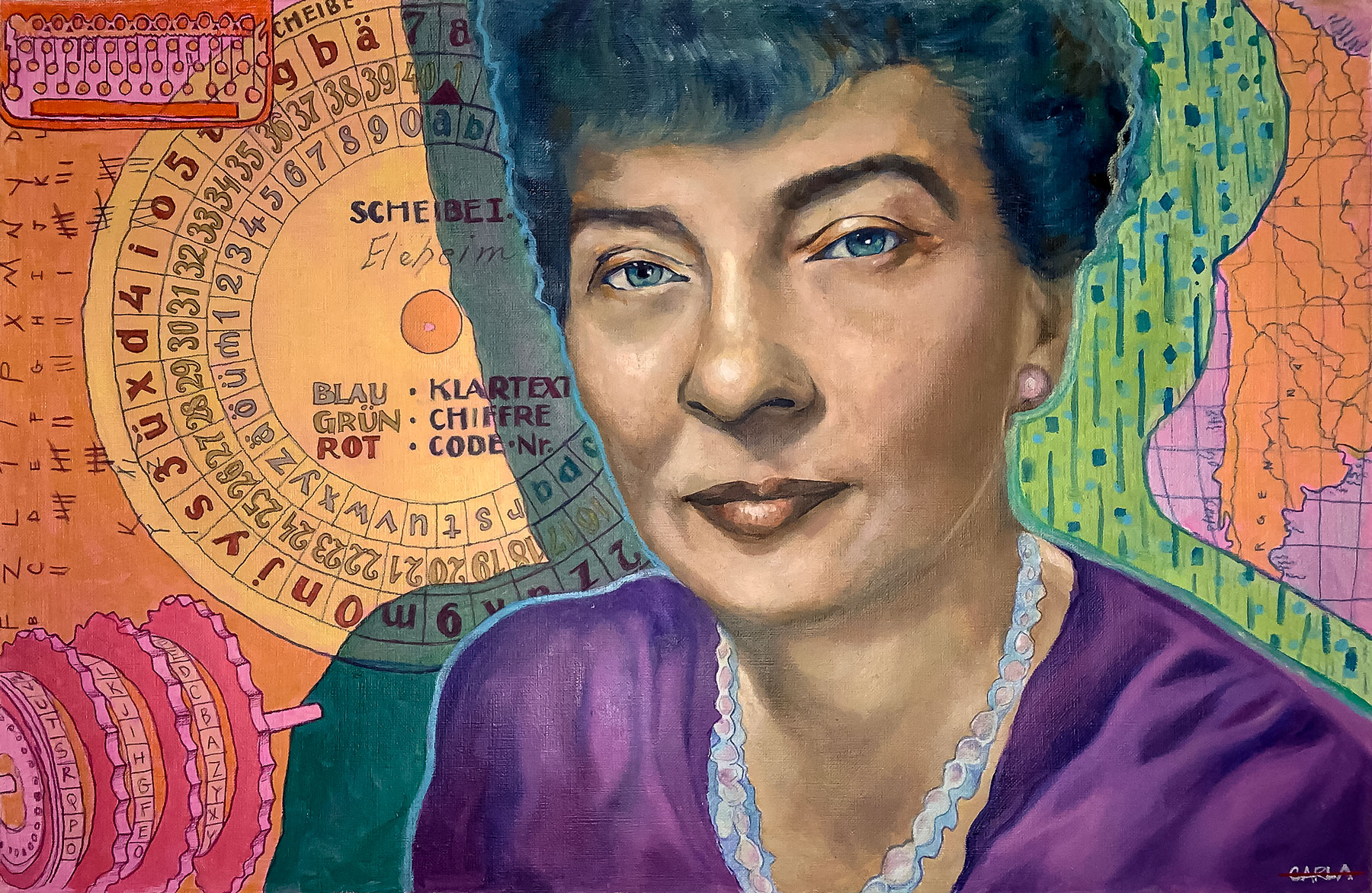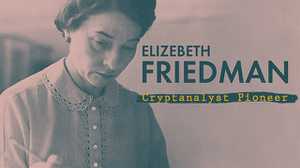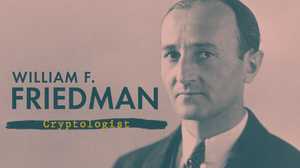How Codebreaker Elizebeth Friedman Fought Nazi Spies
For 50 years, her contributions to WWII intelligence were a secret. No longer.

She tracked her targets’ coded messages for more than two years, painstakingly translating gibberish into actionable intelligence. Then, without warning, the messages ceased.
When covert transmissions go dark, it means the worst thing possible for a codebreaker. Her targets have discovered they're under surveillance. They've stopped transmitting and have gone underground, and from there they can regroup and resume sending signals with stronger and more impenetrable codes.
This dreaded turn of events came in March 1942. Master cryptanalyst Elizebeth Friedman had been intercepting and deciphering codes of Nazi spies in South America since early 1940. Friedman listened in as the spies told their masters in Berlin about the movement of Allied ships carrying troops and supplies to the front. She transformed strings of garbled letters from Nazi transmissions into plain text:
Queen Mary departed on March 8 1800 local time.
The Queen Mary on the 12th at 1500 MEZ was reported near the coast at Ceara in the direction of Belem through Piratiny.
The entire arsenal of democracy was at stake, with millions of tons of Allied supplies already sunk to the bottom of the Atlantic by German U-boat interceptions. By knowing what Allied ships the Nazis were tracking, however, Friedman could alert American and British military leaders to alter their course and get out of harm’s way. More than once, as in the case of the route of the troopship RMS Queen Mary and its 8,398 American servicemen, her work saved thousands of lives.
Now the only sound on the radio line was silence.
The person Friedman had to thank for that foreboding calm was FBI director J. Edgar Hoover. Hungry for acclaim, Hoover used the information gathered by Elizebeth’s team of Coast Guard codebreakers to send his G-Men to South America to arrest the Nazi information sources. Failing to understand that the raids would tip the hand of American intelligence, Hoover left the cryptanalysts to deal with the aftermath. Now all of their previous progress was undone. The Nazi communications were secret again with new and more convoluted strings of ciphers and potentially fatal consequences.
Elizebeth Friedman was 49 years old. It had been 25 years since she first taught herself, with no formal training and an academic background in poetry, how to break codes. She was one of the best in the world. Friedman stopped rum running gangsters and foiled international drug trafficking operations.
The Coast Guard first approached her in 1925 for help battling the rum runners violating Prohibition laws. She created the branch’s codebreaking unit, trained all of her colleagues and over the next decade built up a top-notch cryptanalytic team. After Pearl Harbor in December 1941, however, her unit was taken over by the Navy and she was essentially demoted, replaced as the unit’s leader by a younger and less-skilled male lieutenant. (The U.S. military didn’t allow civilians to head up intelligence operations, and, in any case, women would only be allowed to serve fully in the military after 1948.)
Now she faced the greatest challenge of her career. Even after Hoover’s gambit set her efforts back by months, Friedman’s response was what it had always been: She simply redoubled her efforts and got back to work.

As she had feared, following the FBI roundup, the sizeable Nazi contingent still at large in South America resurfaced with far more complicated ciphers. Already by April 1942, new clandestine radio stations were cropping up all over the continent and broadcasting messages using a devilishly complex encryption device called the Enigma machine. Across the Atlantic, British computer scientist Alan Turing was breaking the most elaborate Enigma codes with room-sized electromechanical machines that were some of the earliest forerunners to computers. Elizebeth was trying to decipher almost equally complex Enigma messages, but using only pen and paper.
Once she was decoding the secret spy communications again, she discovered that nothing less than the balance of power in the western hemisphere was at stake. The Reich’s most successful South American agent, a high-ranking member of Hitler’s elite SS forces, named Johannes Sigfried Becker, was working behind the scenes to drum up fascist sympathy across the region. Argentina, Bolivia, Brazil, Chile, Paraguay—all had vulnerable governments that could potentially be turned fascist.
Friedman helped ensure that such a sinister future never came to pass. She had become, through her work, a one-woman pattern recognition engine. And now, over several months, she led a critical effort to suss signal from noise once again.

By December 1942, Friedman’s Coast Guard team cracked every single one of the Nazi’s new codes. They were back to eavesdropping on German spies who were none the wiser they were being listened to. By the end of the war, her team broke three separate Enigma machines and contributed 4,000 decoded messages to the fight against Nazi domination, but it would be more than half a century before the larger public knew what she had accomplished.
Years later, Friedman wrote about her last day as a government cryptanalyst in her unpublished memoir, Footnote to History, titled with an eye to how the official record often treats female protagonists. “I signed the pledge that was exacted of all departing from the sacred precincts of secrecy,” she said, “the pledge never to reveal at least without authority from on high, or even to refer to, any of the projects with which I had dealt during WWII.”
In the meantime, J. Edgar Hoover again had his own designs on those projects.
As 1944 came to a close, the FBI began a publicity campaign to cast itself as the main actor in routing out Nazi influence in the western hemisphere. With Hollywood director Frank Capra, Hoover produced The Battle of the United States, a propaganda film that depicted the FBI as the sole player in the fight against the Nazi threat in South America. Neither the film nor any of the articles which Hoover commissioned at the time mentioned Friedman’s cryptanalysis unit.
The FBI also re-catalogued the Coast Guard reports from Friedman’s unit under the bureau’s filing system. Only when all of the original intelligence reports were declassified after the turn of the twenty-first century were the authors' identities and Friedman's true role in the war effort revealed.
By her account, she left behind the life of a secret agent with as little fanfare as she had entered it. “I was…back in the world-at-large once more,” she wrote. “It was the end of a Period, an Era. I knew that, as surely as I stood on two feet, I should never…return to that particular form of endeavor again.”
She was right; the dawn of the Information Age made analog solvers obsolete. But the proof was in the trove of papers furnishing evidence of her work decades after her 1980 death. With their release, Friedman was fully brought into light: visible warrior, footnote to history no longer.

Women lead advancements in science, technology, politics, sports and activism—often fighting against inequity and opposition at every turn.
In this collection, explore films, interviews, articles, image galleries and more for an in-depth look at notable female figures in American history.








